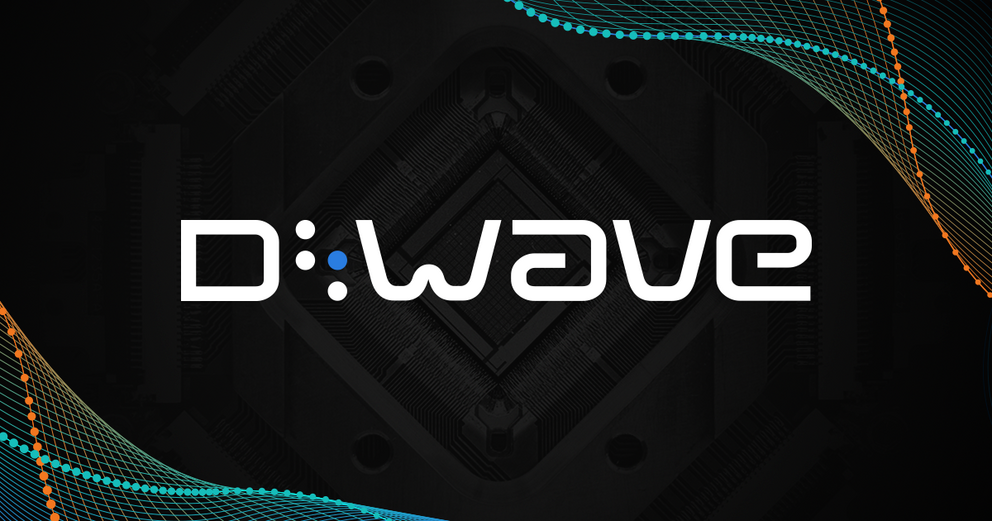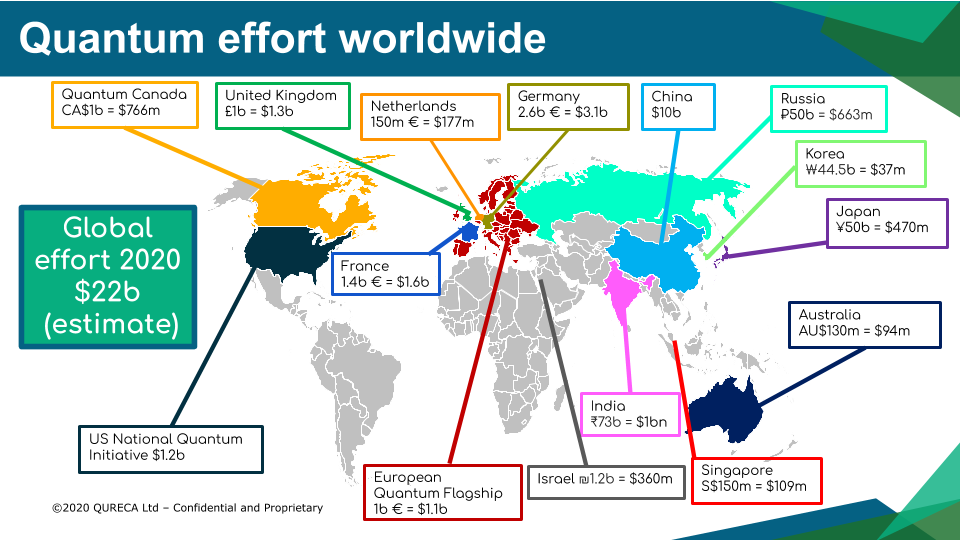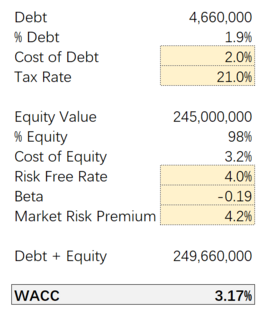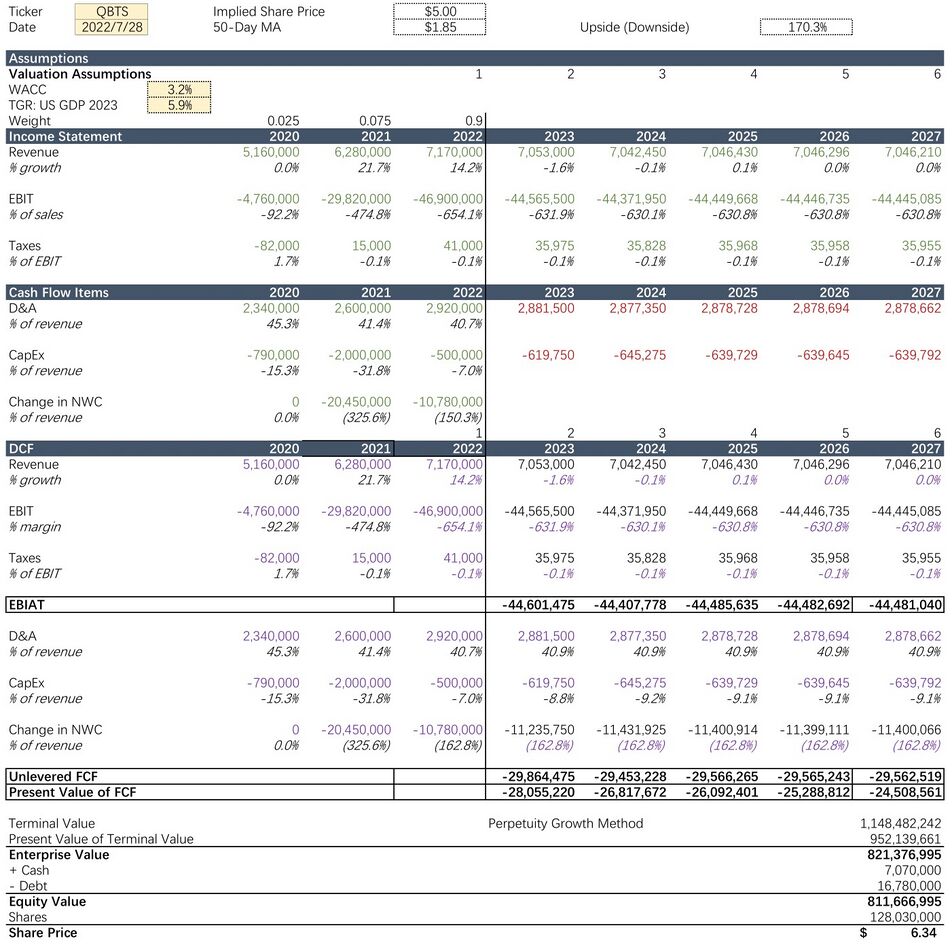D-Wave Quantum Systems Inc.
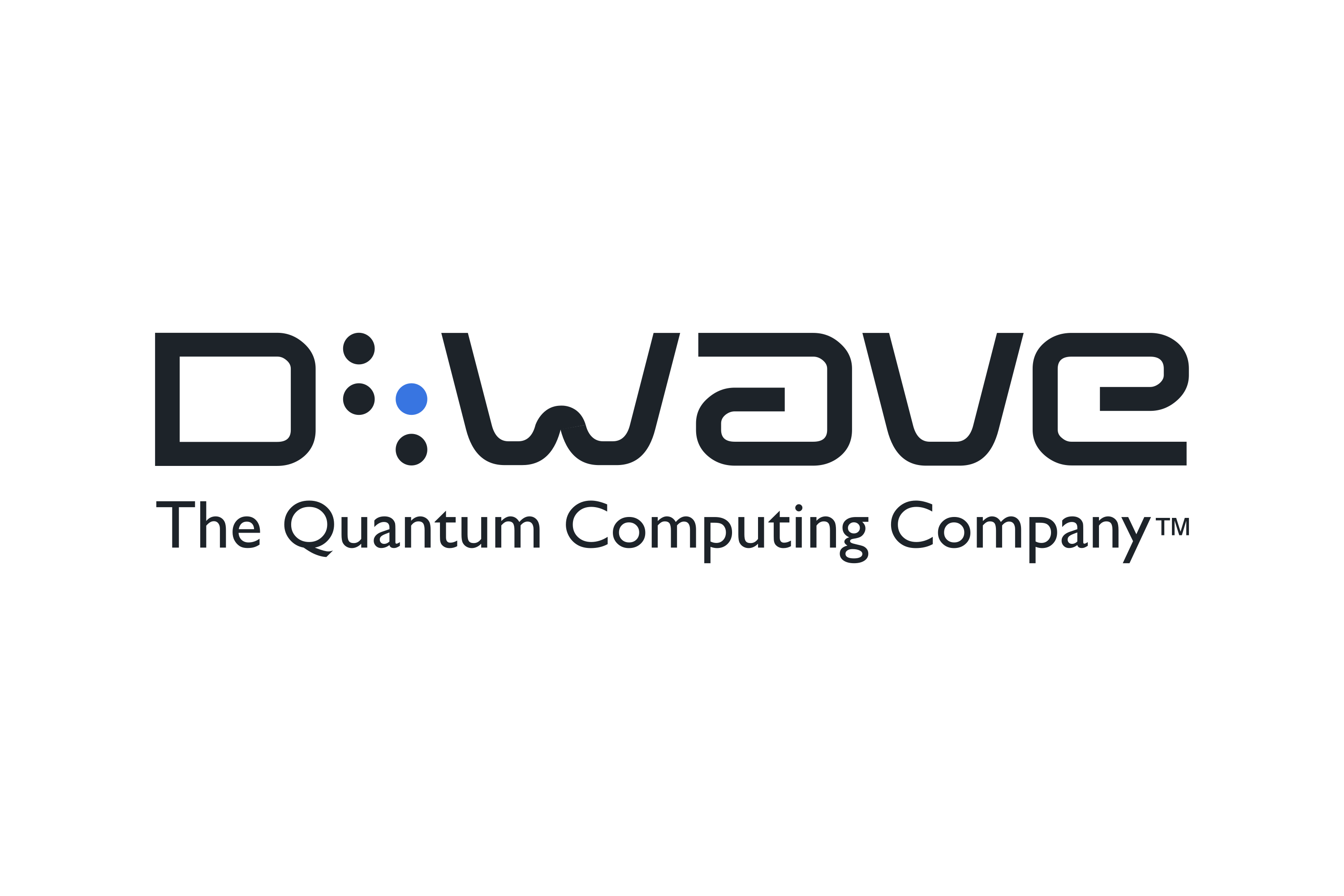 | |
| Type | Public Incorporated |
|---|---|
| Industry |
|
| Founded | 1999 in London, United Kingdom. |
| Founders |
|
| Headquarters | Burnaby, British Columbia , Canada |
Key people |
|
| Revenue | |
| Total assets | |
| Total equity | |
Number of employees | 215 (2022) |
| Website | https://www.dwavesys.com/ |
D-Wave Quantum Systems Inc.(D-Wave) is a Canadian quantum computing company, based in Burnaby, British Columbia. It is one of the pioneering firms investgating applications of quantum computing in various industries and scenarios, especially in Finanace, Manufactoring & Logistics, and Life Sciences, and providing services tailored to client's requirements.
Until the date the report is written, D-Wave's enterprise customers have built over 250 applications across different industries already.
The services D-Wave provides spans in different categories, by client role, by vertical industry, and by product. Please see details in the Products section.
History & Motivation edit edit source
How did the idea of D-Wave come about? edit edit source
D-Wave was founded by Haig Farris (former chair of board), Geordie Rose (former CEO/CTO), Bob Wiens (former CFO), and Alexandre Zagoskin (former VP Research and Chief Scientist). Farris taught a business course at the University of British Columbia (UBC), where Rose obtained his PhD, and Zagoskin was a postdoctoral fellow.
D-Wave at the time operated as an offshoot from UBC, while maintaining ties with the Department of Physics and Astronomy. It funded academic research in quantum computing, thus building a collaborative network of research scientists. The company collaborated with several universities and institutions, including UBC, IPHT Jena, Université de Sherbrooke, University of Toronto, University of Twente, Chalmers University of Technology, University of Erlangen, and Jet Propulsion Laboratory. These partnerships were listed on D-Wave's website until 2005.
In June 2014, D-Wave announced a new quantum applications ecosystem with computational finance firm 1QB Information Technologies and cancer research group DNA-SEQ to focus on solving real-world problems with quantum hardware.
The company name refers to their first qubit design, with d-wave superconductors.
Mission of the company edit edit source
D-Wave's singular focus is to help customers achieve real value by using quantum computing for practical business applications.
"Unlock the Power of Practical Quantum Computing Today" --D-Wave Website
Products & Services edit edit source
What are the main offerings of the company? edit edit source
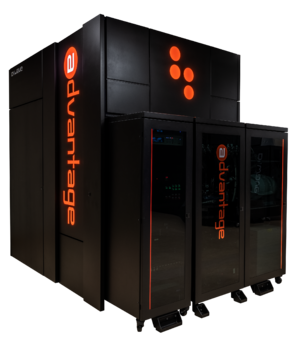
Classification by Product(Type):
- Advantage: the world's first quantum computer built for business(n.b. distinct from D-Wave One, "the world's first commercial quantum computer"). It's processor has an architechture packing 5000+ qubits, with 15-way qubit connectivity.
- As a quantum computer, it intrinsically delivers improved performance on real-world problems over classical approaches. While compared to previous generations, the Advantage is 30x faster and delivers equal or better solutions 94% of the time compared to our previous generation system.
- "Using D-Wave quantum computers, we've been able to solve real protein design problems on quantum hardware." --Hans Melo, Menten AI Co-Founder & CEO
- More Successful Cases of Applications
- Launch: the programme that deploys team of D-Wave experts and partners help enterprises go from problem discovery through production implementation.
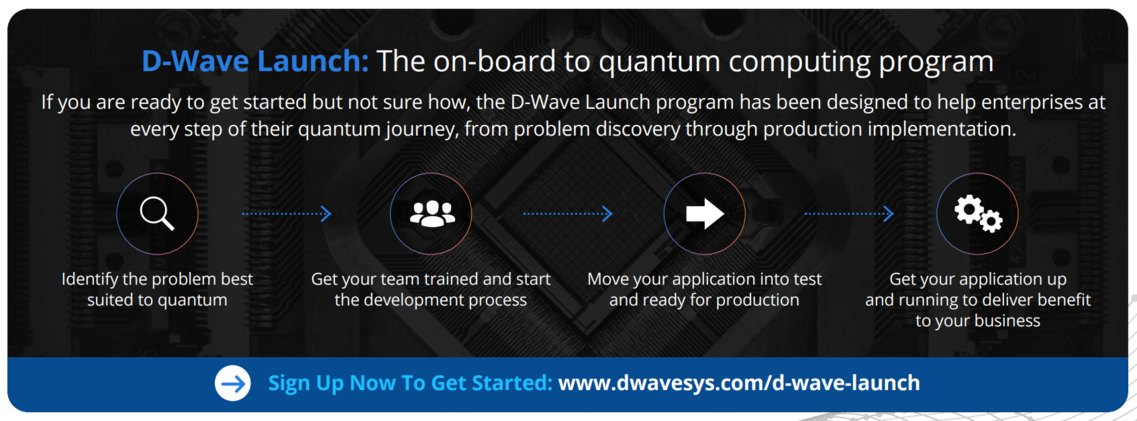
- Leap: the real-time quantum cloud service platform.
- Real-time access to Advantage computer
- All you need to know is Python. The integrated development environment (IDE) streamlines your coding experience in one, simple environment. Ramp up fast with real application examples with usable code, demos, and a visual problem inspector that makes it easier to explore, learn, and activate your quantum application.
- All of the systems, cloud services, application development tools, and professional services needed for an end-to-end quantum computing journey for enterprises and developers. Leap includes an SDK, demos, Jupyter notebooks with live code, and a community to help jump start quantum application development.
- With the Leap Quantum Application Environment, developers can get started writing and running quantum applications today. Whether dense or sparse, the Leap hybrid solver service delivers excellent solutions to business-sized problems, often out-performing classical approaches.
- Ocean: a open source SDK written for mainly in Python, allowing enterprise access of quantum computing techniques, simulators, etc, via API in their business workflow.

Classification by Industry:
- Financial Services: Successful Cases: Portfolio Optimisation and Stratgy Design
- Life Sciences: Successful Cases: Clinical Studies and COVID-19(Menten AI)
- Manufactoring & Logistics: Successful Cases: E-Commerce Logistics and Value Chain
- Public Sector: Successful Cases: Mission-Critical problems for Governments and Organisations
Classification by Client Profession:
- Technology & Business Lead: technology portfolio
- Developer: building real quantum applications
- Researcher: theoretical boundaries of quantum computing
- Topics: From practical applications like traffic optimization, to measuring quantum speedup, to finding the Higgs boson again
Comparison of all D-Wave systems edit edit source
| D-Wave One | D-Wave Two | D-Wave 2X | D-Wave 2000Q[1][2] | Advantage[3] | Advantage2 [4] | |
|---|---|---|---|---|---|---|
| scope="row" Template:Rh2 |Release date | May 2011 | May 2013 | August 2015 | January 2017 | 2020 | 2023-2024 |
| scope="row" class="rh heading table-rh" Template:Rh2 |Topology | Chimera | Chimera | Chimera | Chimera | Pegasus | Zephyr |
| scope="row" class="rh heading table-rh" Template:Rh2 |Code-name | Rainier | Vesuvius | W1K | W2K | Pegasus P16 | |
| scope="row" class="rh heading table-rh" Template:Rh2 |Qubits | 128 | 512 | 1152 | 2048 | 5000+ | 7440 |
| scope="row" class="rh heading table-rh" Template:Rh2 |Couplers | 352 | 1,472 | 3,360 | 6,016 | 35,000+ | |
| scope="row" class="rh heading table-rh" Template:Rh2 |Connectivity | 6 | 6 | 6 | 6 | 15 | 20 |
| Josephson Junctions | 24,000 | ? | 128,000 | 128,472[5] | 1,030,000 | |
| scope="row" class="rh heading table-rh" Template:Rh2 |I/O lines / Control lines | ? | 192 | 192 | 200[6] | ? | |
| scope="row" class="rh heading table-rh" Template:Rh2 |Active area | 5.5 mm × 5.5 mm | 8.4 mm × 8.4 mm | ||||
| scope="row" class="rh heading table-rh" Template:Rh2 |On-chip memory | 22 kB | 130 kB | ||||
| Operating Temperatue(K) | ? | 0.02 | 0.015 | 0.015 | <0.015 | |
| Power Consumption (kW) | ? | 15.5 | 25 | 25 | 25 | |
| scope="row" class="rh heading table-rh" Template:Rh2 |Buyers | Lockheed Martin |
|
|
|
|
Comparison of D-Wave systems edit edit source
| D-Wave One | D-Wave Two | D-Wave 2X | D-Wave 2000Q[11][12] | Advantage[3] | Advantage 2[13][14] | |
|---|---|---|---|---|---|---|
| Template:Rh2 scope="row" | Release date | May 2011 | May 2013 | August 2015 | January 2017 | 2020 | 2023-2024 |
| Template:Rh2 scope="row" class="rh heading table-rh" | Topology | Chimera | Chimera | Chimera | Chimera | Pegasus | Zephyr |
| Template:Rh2 scope="row" class="rh heading table-rh" | Code-name | Rainier | Vesuvius | W1K | W2K | Pegasus P16 | |
| Template:Rh2 scope="row" class="rh heading table-rh" | Qubits | 128 | 512 | 1152 | 2048 | 5000+ | 7440 |
| Template:Rh2 scope="row" class="rh heading table-rh" | Couplers[15] | 352 | 1,472 | 3,360 | 6,016 | 35,000+ | |
| Template:Rh2 scope="row" class="rh heading table-rh" | Connectivity | 6 | 6 | 6 | 6 | 15 | 20 |
| Template:Rh2 scope="row" class="rh heading table-rh" | Josephson junctions | 24,000 | Template:Dunno | 128,000 | 128,472[5] | 1,030,000 Template:Citation needed | |
| Template:Rh2 scope="row" class="rh heading table-rh" | I/O lines / Control lines | Template:Dunno | 192 | 192 | 200[16] | Template:Dunno | |
| Template:Rh2 scope="row" class="rh heading table-rh" | Active area | 5.5 mm × 5.5 mm | 8.4 mm × 8.4 mm | ||||
| Template:Rh2 scope="row" class="rh heading table-rh" | On-chip memory | 22 kB | 130 kB | ||||
| Template:Rh2 scope="row" class="rh heading table-rh" | Operating temperature (K) | Template:Dunno | 0.02 | 0.015 | 0.015 | <0.015 | |
| Template:Rh2 scope="row" class="rh heading table-rh" | Power consumption (kW) | Template:Dunno | 15.5 | 25 | 25 | 25 | |
| Template:Rh2 scope="row" class="rh heading table-rh" | Buyers | Lockheed Martin |
|
|
|
|
more information about D-Wave quantum computers can be found here
Market edit edit source
Total Addressable Market
Here, the total addressable market (TAM) is defined as the global financial service, healthcare, energy, materials science, manufactoring, logistics, public sector, and cryptography market, and based on a number of assumptions, it is estimated that the size of the market as of 2022, in terms of market capitalisation, is $418 billion. The figure will reach $500 billion in 2030 by pessimists, and optimists believe it will reach $1 trillion instead. But do note this is the current markets D-Wave is involved, there are other unexplored sectors the firm could potentially expand into.
The actual TAM size will depend on a number of factors, including the development of new quantum computing hardware and software, the adoption of quantum computing by businesses and governments, and the availability of quantum computing experts.
Serviceable Available Market(SAM)
D-wave did not publically disclosed its SAM. Howeverm, according to a report by MarketsandMarkets, the global quantum computing market was valued at $1.5 billion in 2021 and is projected to reach $8.4 billion by 2026, at a CAGR of 42.2%. This suggests that the SAM for quantum computing is around $8.4 billion.
Servicable Obtainable Market(SOM)
D-wave did not publically disclosed its SOM. Given the fact that D-Wave is well-funded, with a strong technology platform, a growing customer base, and a strong management team. I estimate, on the assumption that D-Wave will capture around 25% of the SAM, the company's SOM is around $2 billion.
More on quantum computing markets, see Fortune Bussiness Insights and MarketsandMarkets.
Competition edit edit source
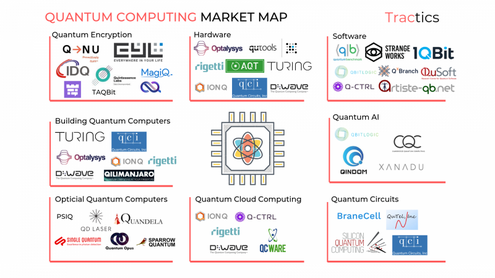
There are several other companies that compete with D-Wave in the offering of luxury sports cars worldwide. Some are subsidaries of top technology giants: Microsoft, IBM, Google(AI), Amazon; some have IPOed in recent years: Rigetti Computer, IonQ; other notable examples include: Honeywell, Quantinuum(ready to IPO).
Qubit is the computing unit for quantum systems. There are three major types of
There are three major architechture/designs of Qubits are:
- Superconductor: materials that can be cooled to very low temperatures, near absolute zero. At these temperatures, the materials can exhibit quantum mechanical properties, such as superposition and entanglement. Superconducting qubits are the most widely used type of qubit, and they are the basis for most commercial quantum computers. This is the category D-Wave, Google, and IBM Qiskit is implementing in their systems.
- Ion-Trap: ions, which are atoms that have been stripped of some of their electrons. The ions are trapped in a vacuum chamber and are cooled to very low temperatures. The ions can be manipulated using lasers, which can be used to control their quantum states. Trapped ion qubits are very promising, but they are still in the early stages of development. This is applied by IonQ, Quantinuum, Honeywell, Microsoft(partnered with Quantinuum), Amazon(partnered with IonQ)
- Photon: particles of light. Photons can be used to encode quantum information due to their quantum nature first introduced by Einstein's paper on Photoelectric Effect, and they can be manipulated using optical devices. Photonic qubits are very promising, but they are also very challenging to implement. This is applied by Psi Quantum, Lightmatter, and Xanadu
| Processor | 2000Q | Advantage | Advantage 2 Prototype | Advantage 2 |
|---|---|---|---|---|
| Status | online | online | online | in development |
| Topology & Grid Size | Chimera | Pegasus | Zephyr | Zephyr |
| Qubits per Unit Cell | 8 | 24 | 8 | 8 |
| Couplers per qubit | 6 | 15 | 20 | 20 |
| Total Qubits | 2000+ | 5000+ | 563 | 7000+ |
| Total Couplers | 6000+ | 35000+ | 4790 | 60000+ |
Given that D-Wave is still the sole player in terms of selling Commercial Quantum Computers, it is impossible to conduct parallel comparisons with other players in the market. Therefore a comparison of additional parameters is performed between D-Wave's latest product instead.
Team edit edit source
Leadership edit edit source
Chairperson of the Board - Steven West edit edit source
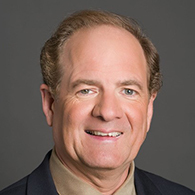
Mr West is a 30‐year veteran of the information technology marketplace and currently the founder and a partner in Emerging Company Partners LLC, a technology consulting firm.
Over the course of his career, he has held many executive positions, including president and CEO of Entera, an Internet content delivery firm (acquired by Blue Coat Systems, Inc.); CEO of Hitachi Data Systems; and Group Executive of EDS. West is a former board director at Cisco, where he served for 23 years, and Autodesk where he served for nine years. He also served on the boards of Delta‐Q Technologies and Bycast Inc.
Chief Executive Officer - Dr Alan Baratz edit edit source
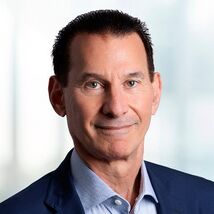
Dr. Alan Baratz became the CEO of D-Wave in 2020. Previously, as Executive Vice President of R&D and Chief Product Officer, he drove the development, delivery, and support of all of D-Wave’s products, technologies, and applications. He has over 25 years of experience in product development and bringing new products to market at leading technology companies and software startups.
As the first president of JavaSoft at Sun Microsystems, Baratz oversaw the growth and adoption of the Java platform from its infancy to a robust platform supporting mission-critical applications in nearly 80 percent of Fortune 1000 companies. He has also held executive positions at Symphony, Avaya, Cisco, and IBM. He served as CEO and president of Versata, Zaplet, and NeoPath Networks, and as a MD at Warburg Pincus LLC. Dr Baratz holds a doctorate in computer science from Massachusetts Institute of Technology.
Co-Founder, Chief Scientist, and Company Secretary - Eric Ladizinsky edit edit source
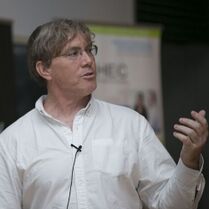
Eric Ladizinsky is a senior scientific management executive with strong background in physics, engineering, materials, and manufacturing. He brings specific expertise in multi-disciplinary R&D, technical team building, creation and management of infrastructure, and convergence of R&D efforts with full-scale manufacturing. At Northrop Grumman Space Technology (formerly TRW, Inc.), he ran a multi-million dollar DARPA program in Quantum Computing using superconducting integrated circuit technology.
Mr. Ladizinsky leads D-Wave's technical effort to develop the superconducting integrated circuit fabrication process and has introduced industrial optimization practices for high yields, including construction of custom vacuum systems, automated testing infrastructure, and specialized low noise electronics. From our US foundry location, he runs the entire fabrication process - thin film deposition, photolithography, etching, testing and troubleshooting. Mr. Ladizinsky is also an Adjunct Professor of Physics at Loyola Marymount University, where he has taught courses including classical mechanics, electromagnetic theory and quantum theory. He worked with faculty and students to bring the quantum mechanics program current with state-of-the-art in quantum theory, covering quantum computing, decoherence theory and modern experimental techniques.
Mr. Ladizinsky has a BSc. Physics and Mathematics degree from the University of California, Los Angeles. He has 3 granted US patents covering advanced superconducting IC processes and new materials development.
Chief People Officer - Victoria Brydon edit edit source
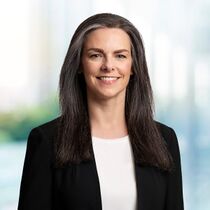
Ms Victoria Brydon is a seasoned business executive with 20 years of progressive and broad experience. Currently the Senior Vice President, People and Operational Excellence, Victoria leads the development and execution of talent strategy for D-Wave, and works cross functionally to provide executive oversight to ensure business operational excellence.
Prior experience includes Kasian Architecture, Sierra Systems, and PMC-Sierra. Victoria holds a Masters of Business Administration from Royal Roads University, and a Bachelor of Commerce from Queen’s University. Victoria is a Certified Executive Coach, and Chair of the Board of the BC SPCA where she also serves as President, and Chair of the Executive and Human Resources Committee.
Senior Vice President, Quantum Technologies and Systems Products - Mark W Johnson edit edit source
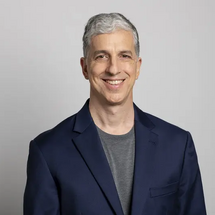
Mr Johnson has been involved in the development and commercialization of technology for nearly 25 years. Mark leads the R&D and quantum hardware programs. Mark joined D-Wave in 2005 as an experimental physicist and superconducting circuit design engineer to help develop, build, and deliver the world's first commercially available quantum computer. He continued to work with the D-Wave team to develop and release subsequent generations of quantum computers.
Most recently, Mr Johnson led the development and delivery of the company’s 5th generation, and most powerful and connected commercial quantum system ever built, the Advantage system. Prior to joining D-Wave, Mark was a scientist with the Superconductive Electronics Organization at the Space Park facility of Northrop Grumman, formerly TRW, Inc., developing superconductive analog-to-digital converters and digital signal processors for communications applications. Mark holds a doctorate in physics from the University of Rochester.
Chief Financial Officer - John Markovich edit edit source
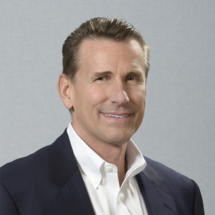
Mr Markovich is senior financial executive with extensive experience and successful track record in leading both public and private high growth technology companies through all phases of development from pre-revenue venture capital-backed start-ups to a $1.2 billion NYSE-listed Fortune 500 multinational manufacturer.
Markocivh has broad experience in negotiating and closing complex domestic and international financing and commercial transactions; aligning financing strategies with operating strategies; and positioning companies for M&A / IPO exits. Particular focus on developing scalable organizational infrastructures through building high performance teams; designing and implementing appropriate systems (ERP); and institutionalizing efficient processes and corresponding policies. Strong operations orientation directed at identifying and implementing operational efficiencies, cost savings, improved working capital management and risk reduction while managing towards critical value-driving operational metrics with an emphasis on cash flow. Meaningful contributor towards developing, refining and executing corporate strategy. Areas of functional responsibility include accounting, tax, treasury, FP&A, IR, HR, legal, M&A, operations, IT and customer service.
Audit Committee Chair - Roger Biscay edit edit source
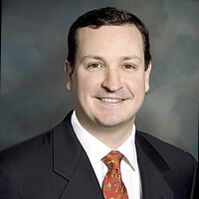
Roger holds over 20 years of experience driving financial management, strategy, organizational planning, and compliance across high‐tech public and private companies. He has served as Senior Vice President and Treasurer of Cisco Systems since April 2017, where his responsibilities include corporate finance, investments, cash management, foreign exchange, risk transfer, safety, security and business resiliency. He is also Senior Vice President and Corporate Treasurerand Corporate Security of Cisco.
He has served on the board of directors of Wasabi Technologies since August 2021, including as a member of the audit committee and governance committee, and has held senior financial markets positions in the areas of fixed income, equity capital markets and foreign exchange with the Royal Bank of Canada, Banque Paribas and Lehman Brothers.
Compensation Committee Chair - Amy Cappellanti‐Wolf edit edit source
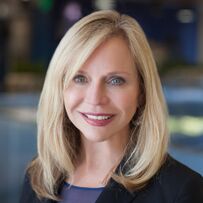
Ms Cappellanti-Wolf is an accomplished senior human resources professional, business transformer and executive coach with expertise ranging from startups to Fortune 500 enterprises. Her management roles span high‐tech (Symantec, Silver Spring Networks, Cisco, Sun Microsystems), entertainment (The Walt Disney Company), and consumer goods (Frito‐Lay).
Since May 2022 she has served as Chief Human Resources Officer and Real Estate Leader of Cohesity. From January 2014 to February 2020, Amy was the Chief Human Resources Officer and Real Estate Leader for Symantec. She also serves on the board of Softchoice, a provider of technology solutions and managed services; Betterworks, a continuous performance management platform company; and Pivotal, a non‐profit that focuses on foster youth education and employment.
Majority Owners edit edit source
| Name | Equities | % | Valuation ($M) | Recent Changes(shares) |
|---|---|---|---|---|
| The Public Sector Pension(PSP) Investment | 18.37 | 22.80 | 38.40 | |
| Goldman Sachs & Co. LLC (private banking) | 7.94 | 9.85 | 16.59 | -307 |
| Lockheed Martin Investment Management | 0.92 | 1.14 | 1.91 | |
| 180 Degree Capital Corp. (Investment Management) | 0.91 | 1.13 | 1.91 | |
| The Vanguard Group, Inc. | 0.49 | 0.61 | 1.03 | |
| BlackRock Fund Advisors | 0.43 | 0.54 | 0.90 | |
| SG Americas Securities LLC | 0.34 | 0.42 | 0.71 | +340,243 |
| Geode Capital Management LLC | 0.33 | 0.41 | 0.69 | +113,543 |
| Purpose Investments, Inc. | 0.23 | 0.29 | 0.49 | -3,180 |
| Charles Schwab Investment Management | 0.20 | 0.25 | 0.43 | -2,832 |
Top 10 Mutual Funds Holding D-Wave edit edit source
Financials edit edit source
Stock Analysis: Highly Recommended, has almost all the Fundamental Data about a company. PitchBook: Has information about companies, including compariables & competitors, but subscription required
2022 Q4 Report: https://ir.dwavesys.com/news/news-details/2023/D-Wave-Reports-Fourth-Quarter-and-Year-End-2022-Results/default.aspx
2022 Annual Report https://s201.q4cdn.com/339170267/files/doc_financials/2022/q4/f08a6a0c-2ea5-4a3f-bda0-4eb7769ed224.pdf
Most recent quarter(Q1) edit edit source
The first quarter financial results for 2023 indicate a positive, but slower trajectory for the company's revenue, which has decreased by 13% year-on-year, steady at $1.6 million. Given D-Wave has strong focus on research and development, while the revenue is increasing, its current profit and net assets are still negative, and have signs of decreasing, especially since the release of Advantage 2 in 2022.
| Income Statement | Q1 2022 | Q1 2023 | % change | abs change($) |
|---|---|---|---|---|
| Revenue ($m) | 1.7 | 1.6 | -27.2 | -0.13 |
| Gross Profit (GAAP, $m) | 1.1 | 0.421 | -61.6 | -0.676 |
| Gross Profit (non-GAAP, $m) | 1.2 | 0.852 | -27.1 | -0.317 |
| Gross Margin (GAAP, %) | 64.0 | 26.6 | -37.4 | |
| Gross Margin (non-GAAP, %) | 68.2 | 53.8 | -14.4 | |
| Operating Profit ($m) | -47.7 | -50.9 | -6.7 | |
| Net Profit before tax ($m) | -111.6 | -74.2 | 33.5 |
Annual Performance edit edit source
| Income Statement | FY-2020 | FY-2021 | FY-2022 |
|---|---|---|---|
| Revenue ($m) | 5.16 | 6.28 | 7.17 |
| Revenue Growth (%) | / | 21.69 | 14.24 |
| Gross Profit ($m) | 4.25 | 4.53 | 4.25 |
| Gross Margin (%) | 82.27 | 72.13 | 59.25 |
| Operating Profit ($m) | -31.47 | -38.95 | -59.46 |
| Net Profit ($m) | -10.02 | -31.55 | -51.53 |
| EBIT ($m) | -4.76 | -29.82 | -46.9 |
Balance Sheet: Past 3 years
| Balance Sheet | FY-20 | FY-21 | FY-22 |
|---|---|---|---|
| Total Assets (£m) | 47.46 | 32.61 | 26.95 |
| Total Liabilities (£m) | 14.73 | 29.59 | 32.86 |
| Net Assets (£m) | 32.73 | 3.02 | -5.91 |
Income Statement: 5-year Forecast(by historical CAGR)
| Income Statement | FY-23 | FY-24 | FY-25 | FY-26 | FY-27 |
|---|---|---|---|---|---|
| Revenue (£m) | 1630.2 | 1858.4 | 2081.4 | 2289.5 | 2404.0 |
| Gross Profit (£m) | 554.3 | 659.7 | 749.3 | 847.1 | 913.5 |
| Gross Margin (%) | 34% | 36% | 36% | 37% | 38% |
| EBIT(£m) | -100.32 | -214.57 | -458.95 | -981.67 | -2099.74 |
The historical CAGR(compound annual growth rate) of revenues is: , for Gross Profit, this is , for Gross Margin, this is , for EBIT, this is . The CAGRs are used to extrapolate the future income statements.
As we can see, the historical CAGR for gross margin and EBIT, historical Net Assets are all non-positive, while revenues are increasing, positive, this implies significant increase in operating expenses. Given D-Wave is constantly doing research and development in the field of quantum applications, this reflects:
- R&D in the lastest technology is cash-burning, especially when exploring applications of quantum computing.
- The company is still in the early stages of development. This is often the case with companies that are developing new technologies. The development process can be expensive and time-consuming, and it can take several years before a new technology becomes commercially viable. During this time, the company may be operating at a loss, which could lead to a negative CAGR.
- The company is facing stiff competition. The quantum computing market is still in its early stages, and there are a number of leading companies in computer hardware, including IBM, Microsoft, Google, Honeywell, are competing to develop the most advanced technology. This competition could drive down prices and make it difficult for D-Wave to generate profits.
- The company's technology is not yet ready for prime time. Quantum computing is not yet fully exploited, which can be implied by the D-Wave's expanding Total Addressabel Market(see Markets section). If D-Wave's technology is not yet ready for commercial use, this could also lead to a negative CAGR.
In conclusion, the Income Statement forecast in the next few years might not be accurate, if CAGR is solely used, while the sample length is too short, this does not accurate demonstrate the potential performance of D-wave in the upcoming years, especially when there will be technological breakthrough changing the situation in the upcoming years.
Risks edit edit source
Each risk is scored according to the risk matrix below: edit edit source
| Impact | ||||
|---|---|---|---|---|
| Low | Medium | High | ||
| Likelihood | Low | A1 | B1 | C1 |
| Medium | A2 | B2 | C2 | |
| High | A3 | B3 | C3 | |
edit edit source
- Technology Effectiveness: D-Wave's quantum computers are still in their early stages of development, and there is a risk that the technology may not be as effective as expected. If the technology does not live up to expectations, it could damage D-Wave's reputation and make it difficult to attract customers. C1
- Competitions: Main competitors of D-Wave, apart from Rigetti Computing, IonQ, there are also top tech giants: Microsoft, IBM, Google, Honeywell… providing quantum computing services as subsidiary products. They use different techniques for the qubits in their quantum computers. If these companies are successful in developing more powerful and efficient quantum computers earlier than D-Wave, the investment might downtrend in median term. C2
- Materialisation: The quantum computing market is still in its early stages of development, and there is a risk that it may not materialize. If the market does not materialize, even thought there are already 250+ use cases, it could be difficult for D-Wave to find further customers for its quantum computers. B1
Catalysts edit edit source
- Lowering the Service Barrier: In 2022, announced the launch in the AWS Marketplace to offer its Leap quantum cloud service, quantum proof-of-concept, and quantum feature selection for machine learning (ML)
- Stronger Research Force: In 2023, announced two new collaborations with Institute of Quantum Computing, University of Waterloo on key hardware research, specifically on quantum coherence in quantum computing systems.
- The two multi-year projects between D-Wave and the researchers were funded through the Natural Sciences and Engineering Research Council of Canada (NSERC) Quantum Alliance program, which is part of Canada’s National Quantum Strategy. These projects will focus on identifying improvements in device design and materials quality that support increasingly coherent superconducting quantum processors.
- Collaboration 1: https://www.mastercard.com/news/press/2022/july/d-wave-and-mastercard-take-quantum-leap-into-future-of-financial-services/
- Collaboration 2: https://thequantuminsider.com/2023/06/04/d-wave-and-interpublic-group-partner-on-quantum-powered-advertising-optimization/
Valuation edit edit source
Assumptions edit edit source
- Foreign currency translation adjustment, net of tax is used as tax
- cost of debt is 2%; Market Risk Premium is 4.2%; Tax Rate 21%
- Risk Free Rate is US 10 year T-bills: 4.0%
- US GDP 2023 is used as TGR : 5.9%
- All the inputs (e.g. revenue) is estimated by weighted average
- Terminal Values is calculated with Perpetuity Growth Method
WACC edit edit source
Discounted Cash Flow Model edit edit source
Proposal edit edit source
https://www.marketbeat.com/stocks/NYSE/QBTS/price-target/
More Justifications of longing QBTS stock:
1. Why is D-Wave stock Shrinking recently?
References edit edit source
- ↑
- ↑ D-Wave Systems, PDF, 01-2017, http://www.dwavesys.com/sites/default/files/D-Wave%202000Q%20Tech%20Collateral_0117F.pdf
- ↑ 3.0 3.1 Cite error: Invalid
<ref>tag; no text was provided for refs named:0 - ↑
- ↑ 5.0 5.1
- ↑
- ↑
- ↑
- ↑
- ↑
- ↑
- ↑ D-Wave Systems, PDF, 01-2017, http://www.dwavesys.com/sites/default/files/D-Wave%202000Q%20Tech%20Collateral_0117F.pdf
- ↑
- ↑
- ↑
- ↑
- ↑
- ↑
- ↑
- ↑
